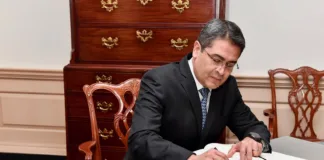Israel, Syria, and the Druze Revolt: Protector or Provocateur?
By 3Narratives News
Published: July 19, 2025
“We have agreed on an immediate and comprehensive ceasefire—effective now.”
— Office of the Syrian Presidency
At daybreak, the battered city of Sweida woke to a rare sound: silence.
For six days, southern Syria had been gripped by a violent eruption between local Druze militias and Syrian government forces. Airstrikes from Israeli jets rained down around Damascus and Sweida. Nearly a thousand people were killed. Tens of thousands displaced. And once again, the ever-fragile Middle East became a powder keg, with international actors scrambling to contain the fire.
On July 19, that fire flickered—if only for a moment. A U.S.-backed ceasefire, endorsed by Turkey and Jordan, was declared. Israel halted its airstrikes. The Syrian government promised to withdraw security forces. But questions linger like smoke in the streets of Sweida: Whose interests were protected? And whose lines were crossed?
A Fragile Calm in Sweida
The heart of the clashes was Sweida, a predominantly Druze city in southern Syria. The region, historically autonomous and weary of Damascus’s authority, became the scene of intense battles between government forces and local armed factions after disputes over land, resource allocation, and security escalated into open conflict.
Israel’s involvement caught the world’s attention. On July 16 and 17, Israeli jets struck Syrian army positions and surveillance bases in Sweida and near Damascus, claiming it was acting in defence of Druze communities under threat from Assad-aligned Bedouin militias.
“Israel cannot stand by while our Druze brothers face extermination,” said Israeli Defense Minister Yoav Gallant. “We acted to protect innocents. Nothing more.”
That action sparked fury from Damascus.
“This is a violation of our sovereignty and international law,” declared Syrian Interim President Ahmed al‑Sharaa. “We are capable of restoring order without foreign bombs falling on our soil.”
Narrative One: Syria’s Sovereignty — Asserted or Eroded?
The Syrian government, newly restructured under al‑Sharaa following Assad’s ouster earlier this year, presented the ceasefire as a sign of national restoration. In his first televised address since taking office, al‑Sharaa vowed to unify Syria under a new constitutional process, starting with reconciliation in Sweida.
The government blamed Israeli interference for “weaponizing sectarian grievances” and accused Tel Aviv of undermining Syria’s path to stability.
But not everyone in Damascus supported this line.
“The ceasefire was necessary,” said Syrian MP Leila Nour. “But we must recognize that the Druze people were not rebelling for Israel—they were demanding autonomy, protection, and dignity.”
In private, Syrian intelligence sources admitted they had underestimated the resolve and coordination of Druze militias—some of whom allegedly received support from Lebanese factions and informal Israeli channels.
Narrative Two: Israel’s Humanitarian Defence — or Strategic Incursion?
From the Israeli perspective, the story was different. Officials in Jerusalem framed the airstrikes as both a moral obligation and a preemptive strategy.
“Iran’s fingerprints are all over the Bedouin attacks,” said retired IDF General Amos Gilad. “And when Tehran threatens Druze in southern Syria, we intervene—not for politics, but for survival.”
According to Israeli military briefings, Hezbollah operatives had moved southward, embedding with pro-Assad militias along the Golan Heights—a red line for Israel’s national security apparatus.
Critics, however, see opportunism.
“This was not humanitarianism,” argued Haaretz columnist Neri Zilber. “It was about creating a buffer zone—expanding Israeli influence under the guise of protecting minorities.”
Still, many Israeli Druze citizens—who serve in the IDF and maintain ties to Syrian relatives—supported the strikes.
“My cousin fled to a church in Sweida during the shelling,” said Major Eli Saada, a Druze IDF officer. “Israel saved his life.”
The Third Narrative: Druze Voices in the Crossfire
Neither Damascus nor Tel Aviv can claim to speak fully for the Druze. This stateless minority, scattered across Syria, Lebanon, and Israel, has long walked a delicate line, valuing self-rule, neutrality, and resilience.
In Sweida, leaders of the Druze militia Bayt al-Tawhid negotiated directly with UN and Turkish mediators to secure aid corridors and civilian evacuations during the worst of the fighting. Their spokesperson, Sheikh Fadi Jandali, issued a rare public statement:
“We did not seek war. But we will not return to being pawns. The Druze will decide their future—without bullets and without bombs.”
The ceasefire, brokered in Ankara and monitored by U.N. observers, includes terms for:
- The withdrawal of Syrian army units from the urban Sweida
- A ban on aerial bombardments across the province
- Emergency aid deliveries via Jordan and the Red Crescent
But observers warn the calm may be short-lived.
“This is a truce, not a solution,” said Rami Abdulrahman of the Syrian Observatory for Human Rights. “The same fault lines remain.”
Key Takeaways
| Event | Details |
|---|---|
| Ceasefire Declared | Sought protection and autonomy, not allegiance to either major power |
| Casualties | 940+ dead, 80,000 displaced |
| Israel’s Role | Claimed strikes were to protect Druze; others allege strategic interference |
| Syria’s Response | Accused Israel of violating sovereignty; vowed national reconciliation |
| Druze Position | Sought protection and autonomy—not allegiance to either major power |
What Comes Next?
- Can the ceasefire hold long enough for humanitarian relief to reach Sweida’s suburbs?
- Will Israel refrain from further strikes, or double down on security patrols near the Golan?
- Will Damascus offer reforms to the Druze community, or return to repression?
For now, the dust has settled. But the Middle East rarely rests for long.
“We are always between protector and provocateur,” said a Druze elder in Qanawat. “Sometimes we don’t know which is worse.”
